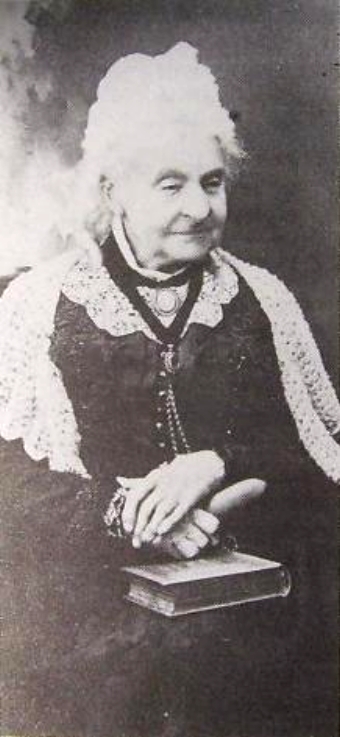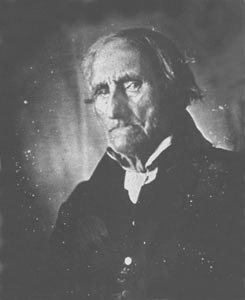
Figure 1 – Margaret Neves (1792-1903). In the public domain in the United States because of its age.
In his landmark, and I think very profound, book “Darwin’s Dangerous Idea,” Daniel Dennett tells us of a coin toss contest. The premise is this, suppose I were to tell you that I can show you a person who has one 100 coin tosses in a row. You would probably say: “No way!” But point of fact, it can be done with 100 % certainty. All you need to do is get 2100 people pair them off randomly. Take the winners, pair them off randomly, and continue the process one hundred times. Now a few points, first, that’s 1,267,650,000,000,000,000,000,000,000,000 people, which is not only a lot but a lot more than the number of people living on the Earth. But hey, this is science fiction. Right? Or at the very least it is a Gedanken Experiment. But the point is that while the winner was/is/will be chosen totally by the laws of random chance, and who said that God does not roll dice with the universe, he/she is certain to feel specially endowed by the Creator.
A similar logic applied to the three remaining members of the club, or is it tontine, of people alive today who were born in the nineteenth century, which was the subject of Tuesday’s blog. Actually, it’s not the same thing, because people who live long tend to have family members who also live longer. So genetics does play a factor. Anyway, Tuesday’s blog got me wondering about the eighteenth century. Who was the last person born in the eighteenth century to live into the twentieth century? I know, I know, who really cares? But bear with me. The interest in that question is that photography was invented in 1838, so the person in question, the winner of the coin toss as it were, was most likely to have been photographed.
The problem with all of this is that record keeping in the eighteenth century was not what it was in the nineteenth and twentieth centuries. As a result, you wind up with an answer to the question of who was best documented to have accomplished the feat, not necessarily who actually lasted the longest. Anyway, a lot of people’s money is on Margaret Ann Neve (18 May 1792 – 4 April 1903) of St. Peter Port, Guernsey, English Channel, who is shown in Figure 1. She was the first documented woman supercentenarian, that’s someone who lives to be older than 110.
We know very little about her. She remembered the turmoil brought to Guernsey by the French Revolution. She married John Neve in England in 1823 but returned to Guernsey in 1849 after his death. Thus, she survived him by 54 years. Neve frequently traveled with her sister with her sister, who lived to be 98. Note that her mother lived to be 99. Their last trip was to Crakow on 1872. travelled abroad to various countries with her sister, who died aged 98. Their last trip was in 1872, when they visited Cracow (then in Austria-Hungary, now in Poland). Margaret Neve died peacefully on 4 April 1903 at age 110 years 321 days. At the time she was believed to be the oldest living person.
As I said, it is really hard to tell whether Ms. Neve was really “the one.” In 2012 a photograph sold on Ebay of a native American Ka-Nah-Be-Owey Wence, aka John Smith, lit a controversy by claiming that he was 129 years old at the time of his death in 1920. This would have places him as born in the same year as Margaret Neve and out living her by seventeen years. It would also make him the oldest person that ever lived topping Jeanne Calment, who died in 1997 at age 122. However, his age appears to be not accurate, and it serves as a lesson of how such ages could be assessed where there are no written records. According to John Smith’s Wikipedia site :Federal Commissioner of Indian Enrollment Ransom J. Powell argued that it was disease and not age that gave him such a wrinkled and ancient looking face and remarked that according to records he was only 88 years old. Paul Buffalo who, when a small boy, had met John Smith, said he had repeatedly heard the old man state that he was “seven or eight”, “eight or nine” and “ten years old” when the “stars fell”. The stars falling refers to the Leonid meteor shower of November 13, 1833, about which Carl Zapffe writes: “Birthdates of Indians of the 19th Century had generally been determined by the Government in relation to the awe-inspiring shower of meteorites that burned through the American skies just before dawn on 13 November 1833, scaring the daylights out of civilized and uncivilized [sic] peoples alike. Obviously it was the end of the world…” This puts the age of John Smith at just under 100 years old at the time of his death, and leaves Ms. Neves secure in her dominance or at least her longevity. The old photographs of John Smith are however wonderful!
Before leaving this subject there is another question to consider and that is “Of all the people who have ever been photographed, who had the earliest birthday.” Photography was invented in 1838; so again the person had to have been born in the eighteenth century. Hmm! A while back I posted a blog about an 1842 photograph of Mozarts wife Constanza (1762 – 1842). Probably not, right? Because she was a mere 80 years old at the time.
As it turns out, the answer relates to something else that we spoke about “The Last Muster Project” and book by a similar name, by photo-detective Maureen Taylor. In 1864 the Rev. Elias Brewster Hillard a congregationalist minister from Connecticut set out desperately to document these “Last Men,” the last surviving veterans of the American Revolutionary War before they died out. He published his photographs and stories in “The Last Men of the Revolution (1864).” The date is important, because at the time the nation was embroiled in a civil war that put at jeopardy what these men set out to accomplish.. Indeed, I would argue that the American Civil War as a fight for liberty was the American Revolution, part II. This book was reprinted by Barre Publishers in 1968. Hillard recognized the importance of this task of preservation. Ms. Taylor, using modern techniques set out with her Last Muster Project to discover more of these memorable men and women. Her book documents the lives of seventy of these individuals.
So who mustered last. Figure 2 is from a daguerreotype in the Collection of the Maine Historical Society that was taken c1852 and shows Conrad Hayer (1749-1856), sometimes spelled Heyer. Hayer was born in 1849 and the photograph was taken in 1852. It seems likely that he was the person with the earliest birthday ever photographed alive. I put the alive part in there so that people don’t through King Tut and the like at me.
In the end we cannot really be sure of either Neve’s or Hayer’s claims to photographic history. Indeed, I hope that readers can find and inform us of earlier people.


Greetings, regarding who the last person from the 18th century was the answer is likely to be Salome Sellers (19 October 1800 – 9 January 1909) of Deer Isle, Maine who lived to be 108.
You can see my research here: http://z3.invisionfree.com/The_110_Club/index.php?showtopic=13053&st=0
The earliest document I could locate was her birth record, so there are no doubts about her age.
Sincerely,
Jimmy Lindberg
Correspondent of the Gerontology Research Group